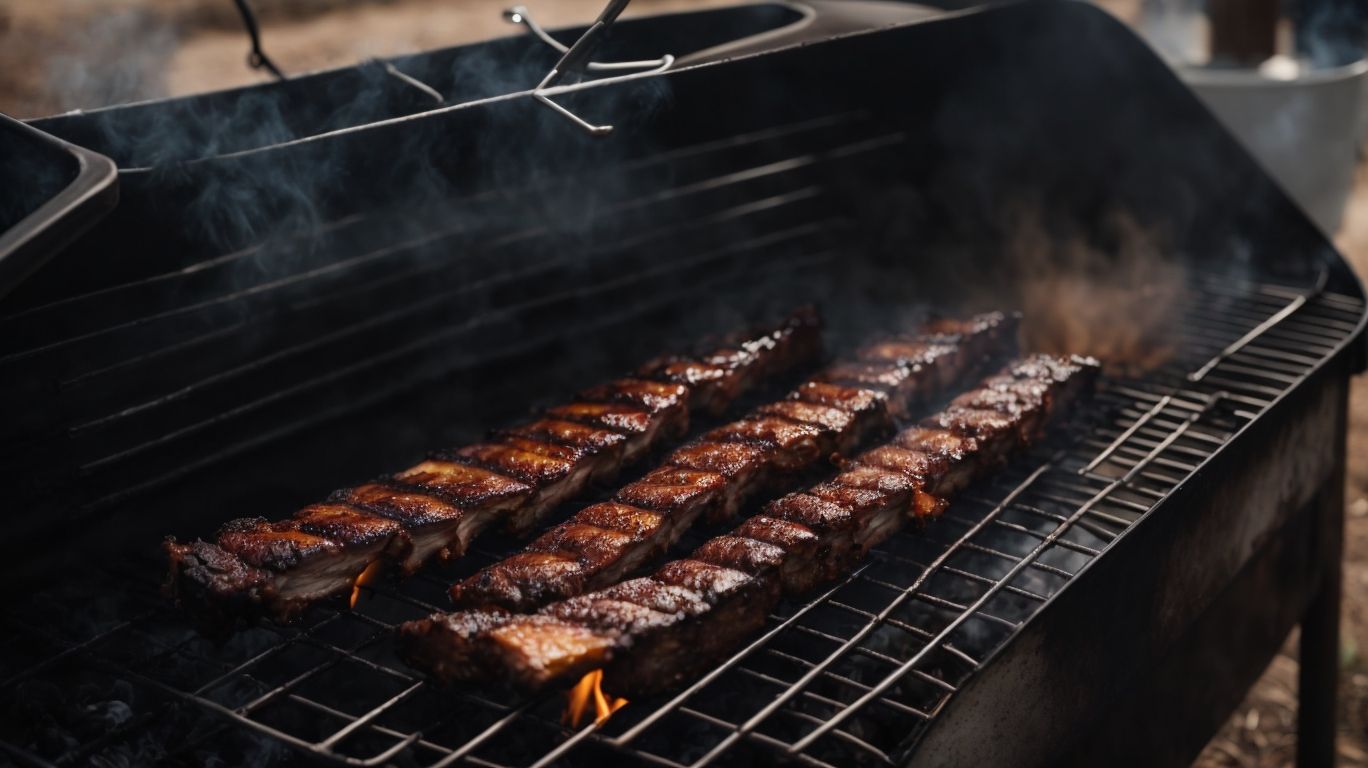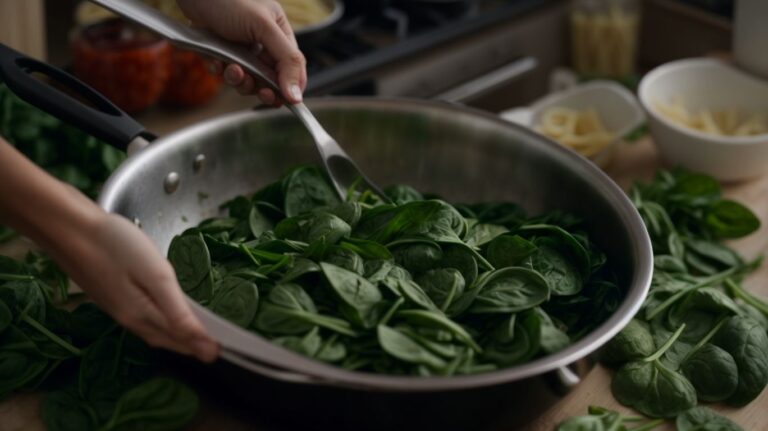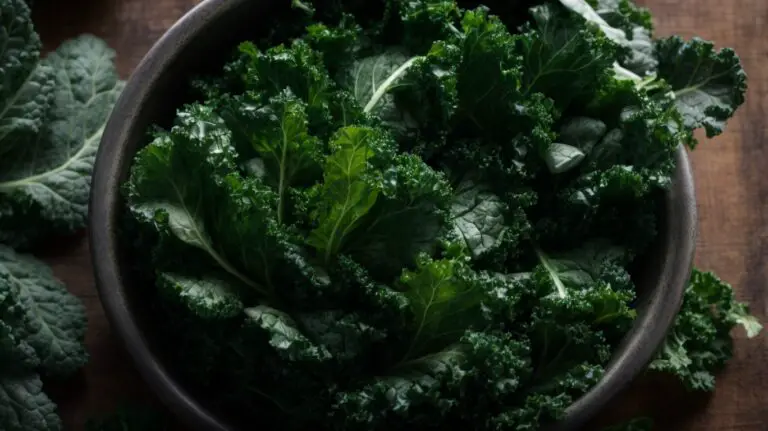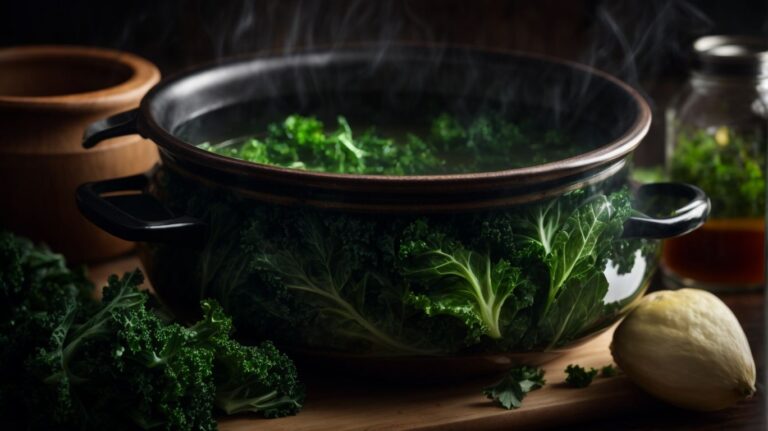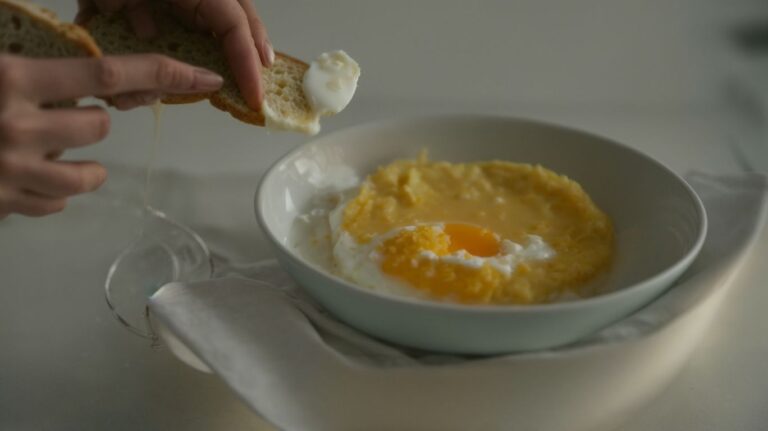How to Cook Ribs on a Grill With Charcoal?
Are you looking to elevate your grilling game and impress your guests with mouth-watering ribs? Look no further!
In this article, we will explore the art of grilling ribs with charcoal, discussing the reasons why it’s the preferred method for many barbecue enthusiasts.
From choosing the right type of ribs to preparing and grilling them to perfection, we will guide you through each step.
So grab your apron and get ready to master the art of cooking ribs on a grill with charcoal!
Key Takeaways:
Why Grill Ribs with Charcoal?
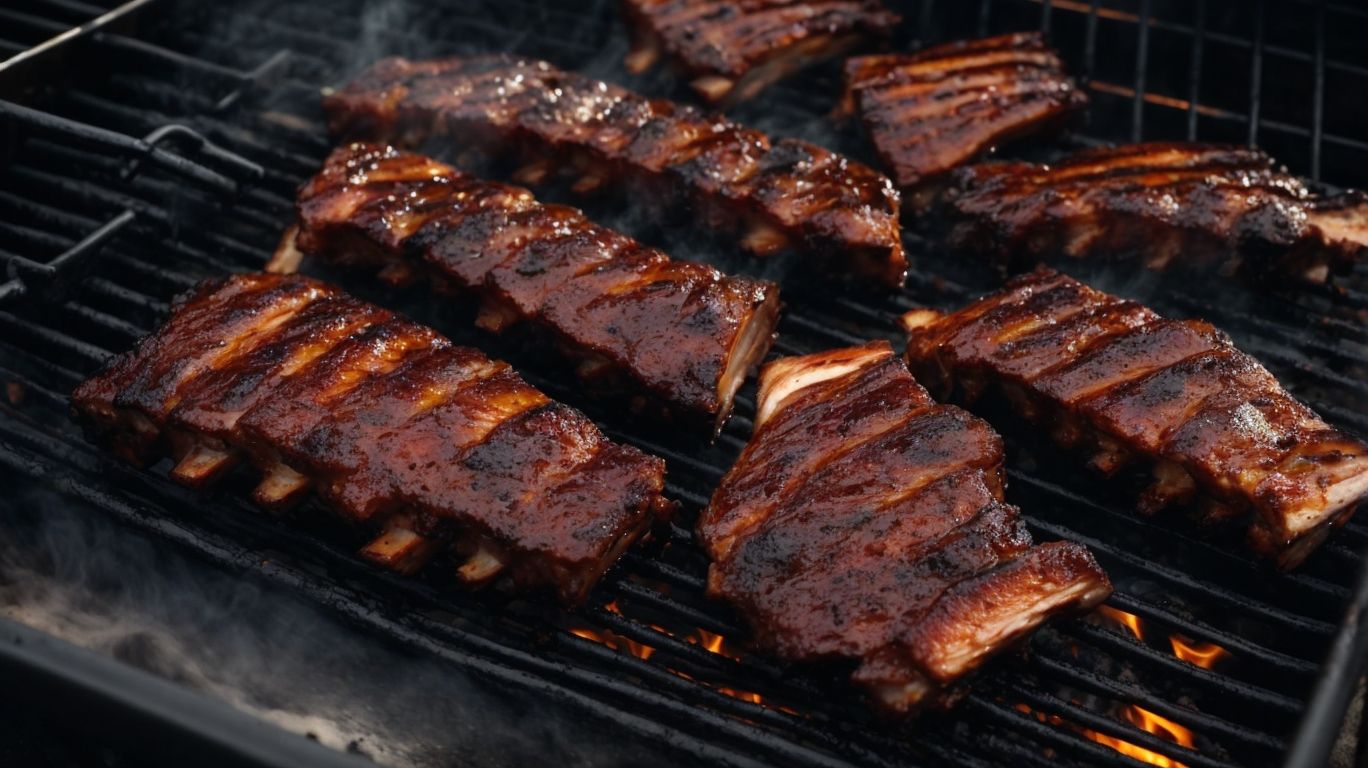
Credits: Poormet.Com – Carl Moore
Grilling ribs with charcoal offers a unique culinary experience by infusing them with a rich smoky flavor, achieving the perfect char while providing more control over the heat.
One of the key benefits of using charcoal for grilling ribs is the distinct smoky essence it imparts to the meat, elevating its flavor profile. Charcoal grills are excellent at creating that coveted char on the ribs, enhancing their visual appeal and taste. The use of charcoal allows for precise heat control, enabling you to adjust temperatures accordingly for the perfect cooking process. This method ensures that the ribs are cooked evenly and retain their juiciness, resulting in a mouthwatering culinary delight for any barbecue enthusiast.
Adds Smoky Flavor
Grilling ribs with charcoal results in a delectable smoky flavor that enhances the overall barbecue experience, especially when using smokers or flavor boosters to elevate the taste.
Charcoal grilling not only imparts a rich smokiness to the ribs but also creates a tantalizing aroma that fills the air, enticing taste buds and setting the stage for a mouthwatering meal.
Smokers, whether traditional offset smokers or modern pellet smokers, add another dimension to the cooking process, infusing the meat with a deep, slow-smoked essence that penetrates every fiber of the meat.
For those looking to further enhance the barbecue flavor profile, incorporating wood chips soaked in flavorful liquids like apple juice or bourbon can intensify the taste and create a signature smoky sweetness that lingers on the palate.
Achieves Perfect Char
Grilling ribs with charcoal allows for achieving the perfect char on the exterior while keeping the meat tender and juicy, using charcoal briquettes to maintain consistent heat.
Charcoal grilling is a time-honored method that imparts a distinctive smoky flavor to ribs, elevating the overall taste profile. To ensure tenderness, the key lies in properly preparing the ribs before grilling, whether it’s removing the membrane, seasoning with your favorite rub, or marinating for added flavor. Regarding grilling methods, low and slow is often touted as the ideal approach for ribs, allowing the meat to cook slowly and evenly. This method, combined with the use of charcoal briquettes, is a winning combination for achieving that sought-after tender and succulent texture.
More Control Over Heat
Charcoal grilling offers more control over the cooking temperature, allowing for precise adjustments and various grilling methods to achieve the desired level of heat for preparing ribs.
One key advantage of using charcoal for grilling is the ability to easily adjust the heat during the cooking process. By simply adding or reducing the amount of charcoal and adjusting the airflow vents, you can quickly alter the temperature to suit the specific requirements of rib preparation. Whether you prefer the low and slow method for tender, fall-off-the-bone ribs or a higher heat for a crispier finish, charcoal grills provide the flexibility needed to achieve outstanding results.
Choosing the Right Ribs for Grilling
Selecting the right type of ribs is crucial for a successful grilling experience, whether you opt for Baby Back Ribs, Spare Ribs, or St. Louis Style Ribs, each offering unique flavors and textures.
Regarding Baby Back Ribs, they are known for being leaner and more tender, with meat that cooks relatively quickly, perfect for those preferring a lighter bite.
On the other hand, Spare Ribs, taken from the lower part of the ribs, are fattier, juicier, and richer in flavor, requiring a longer cooking time but rewarding you with succulent meat falling off the bone.
For a meatier and flatter appearance, St. Louis Style Ribs are cut from Spare Ribs to offer a balance of lean meat and delectable fat content, making them a popular choice among rib aficionados.
Baby Back Ribs
Baby Back Ribs, known for their tender and lean meat, are a popular choice for grilling enthusiasts seeking a flavorful and succulent rib experience.
What sets Baby Back Ribs apart is their delicate texture and meat that easily falls off the bone, making them a delight to savor. The ribs are typically shorter and more curved than other cuts, which adds to their appeal when being grilled to perfection. This cut, originating from the top of the ribcage between the loin and the spine, offers a higher meat-to-bone ratio, ensuring a generous serving of meat with every bite.
Spare Ribs
Spare Ribs, known for their rich marbling and robust flavor, are a versatile choice for grilling, offering a balance of meat and fat that enhances the overall taste.
The marbling in Spare Ribs ensures they stay juicy and tender throughout the grilling process, making each bite a succulent experience.
Their flavorful profile varies from sweet and savory to tangy and smoky, which pairs perfectly with a variety of spice rubs and barbecue sauces.
Whether you prefer low and slow smoking or high-heat grilling, Spare Ribs adapt well to different techniques, guaranteeing a delicious outcome every time.
St. Louis Style Ribs
St. Louis Style Ribs, known for their meaty texture and well-balanced fat content, offer a robust and savory grilling option that appeals to those craving a heartier rib experience.
These ribs are cut in a distinct manner that removes the sternum bone, cartilage, and the rib tips, resulting in a uniform and rectangular shape perfect for even cooking. The even distribution of fat throughout the meat adds an extra layer of juiciness and flavor, making them a favorite among BBQ enthusiasts. When grilled, the meat becomes tender, moist, with a slight char on the outside, enhancing the overall taste. Whether marinated, dry-rubbed, or slathered in BBQ sauce, St. Louis Style Ribs cater to a wide range of flavor preferences, making them an adaptable and versatile choice for any grilling occasion.
Preparing the Ribs for Grilling
Properly preparing the ribs for grilling involves tasks like removing the membrane, seasoning them generously with your favorite rib rub, and ensuring the grill and charcoal are set up for optimal cooking conditions.
Regarding removing the membrane, it’s important to do this to allow the flavors to penetrate the meat. To start, slide a butter knife under the membrane at one end and lift it away in one piece. After that, seasoning the ribs is crucial. You can make your own rub or choose from the variety of rubs available in the market. Ensure that the ribs are well-coated on all sides for a tasty outcome.
Removing the Membrane
Removing the membrane from the ribs is a crucial step to ensure tender and flavorful meat, allowing for better absorption of seasonings and smoke during the grilling process.
When the membrane is left intact on the ribs, it acts as a barrier, preventing marinades, rubs, and smoky flavors from infusing the meat thoroughly. By taking careful steps to remove this thin, translucent layer, you open up the meat’s surface, enhancing its ability to soak in all the delicious flavors you want to impart.
Ultimately, this simple preparation technique can make a significant difference in the final taste and texture of your grilled ribs. It’s the little details like this that can elevate your barbecue game and leave your guests coming back for more.
Seasoning the Ribs
Seasoning the ribs with a flavorful rib rub or spicy blend adds depth to the taste profile, enhancing the grilling experience with unique flavors and aromas that can be further amplified with additional flavor boosters.
These rubs not only provide a delicious exterior crust but also penetrate the meat, infusing it with a delightful blend of spices and herbs, creating a harmonious flavor profile. Utilizing a balanced blend ensures that each bite is a burst of savory goodness, complementing the natural richness of the ribs.
Incorporating flavor enhancers such as apple cider vinegar, Worcestershire sauce, or a touch of honey can take your barbecue game to the next level, adding complexity and depth to the overall taste sensation.
Preparing the Grill and Charcoal
Preparing the grill and charcoal for the cooking session involves setting up the charcoal grill, arranging wood chunks for smoke infusion, and ensuring the grilling environment is conducive to achieving the desired flavors for the ribs.
To begin, ensure your charcoal grill is clean and in good working condition. Start by placing a layer of charcoal briquettes in the grill’s charcoal bed, forming a mound for even heat distribution during cooking.
Light the charcoal using a chimney starter for a reliable and consistent heat source. Once the charcoal is white-hot, carefully spread it out for an even cooking surface. Next, strategically place wood chunks, like hickory or apple, among the charcoal to add that irresistible smoky essence to your ribs.
Grilling the Ribs
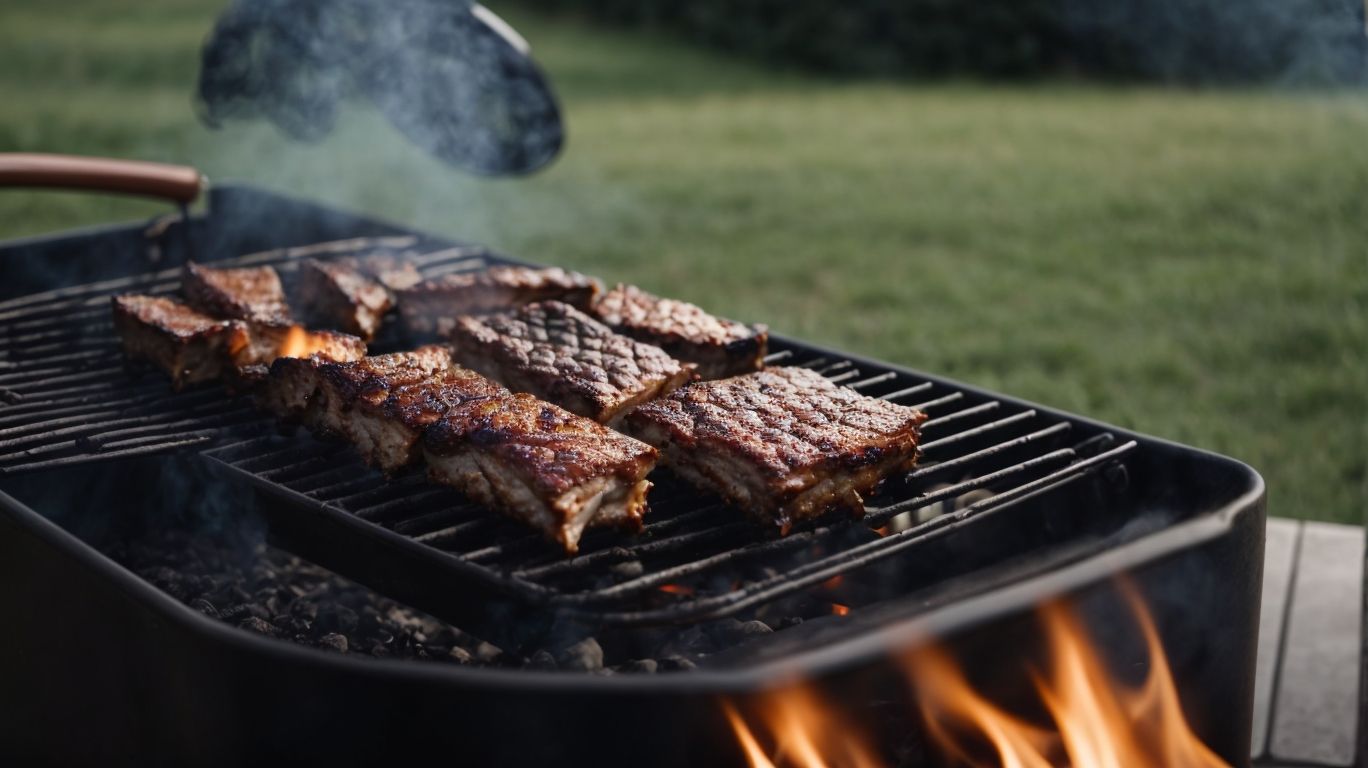
Credits: Poormet.Com – Lawrence Davis
Grilling ribs involves choosing between the indirect heat method for slow cooking and the direct heat method for searing, utilizing a temperature probe to monitor the meat preparation process.
When opting for the indirect heat method, ribs are cooked slowly over a longer period, allowing the flavors to penetrate deep into the meat, resulting in a tender and juicy finish. This method is ideal for thick cuts that require low and slow cooking to break down tough connective tissues.
On the other hand, the direct heat method involves grilling the ribs over high heat for a shorter time to create a flavorful crust on the outside while keeping the meat succulent inside. Using a temperature probe is crucial here to ensure the ribs reach the perfect doneness without overcooking.
Indirect Heat Method
The indirect heat method is ideal for grilling ribs at a low and consistent temperature, often wrapped in foil to retain moisture, resulting in tender and flavorful grilled BBQ ribs perfect for any occasion.
By utilizing the indirect heat technique, you are ensuring that the ribs cook evenly without direct exposure to high flames, preventing any risk of burning or charring. Wrapping the ribs in foil acts as a mini-oven, trapping the natural juices and flavors within, resulting in a succulent and juicy meat with a delightful smoky taste. Moisture retention is critical in the grilling process to enhance the tenderness of the meat and infuse it with all the delicious seasonings and spices.”
Direct Heat Method
The direct heat method involves grilling ribs directly over the heat source for a quicker cook, resulting in ribs that are tender and flavorful, with meat that easily falls off the bone for a satisfying dining experience.
By placing the ribs close to the flames or hot coals, the heat sears the exterior quickly, locking in the juices and creating that sought-after caramelized crust. This efficient method of grilling enhances the natural flavors of the meat, ensuring a delicious end result.
Timing is key with this technique; constant monitoring and turning of the ribs prevent burning while ensuring even cooking. The direct heat also minimizes cooking time, making it a great option for weekday dinners or impromptu gatherings.
How to Tell When Ribs are Done
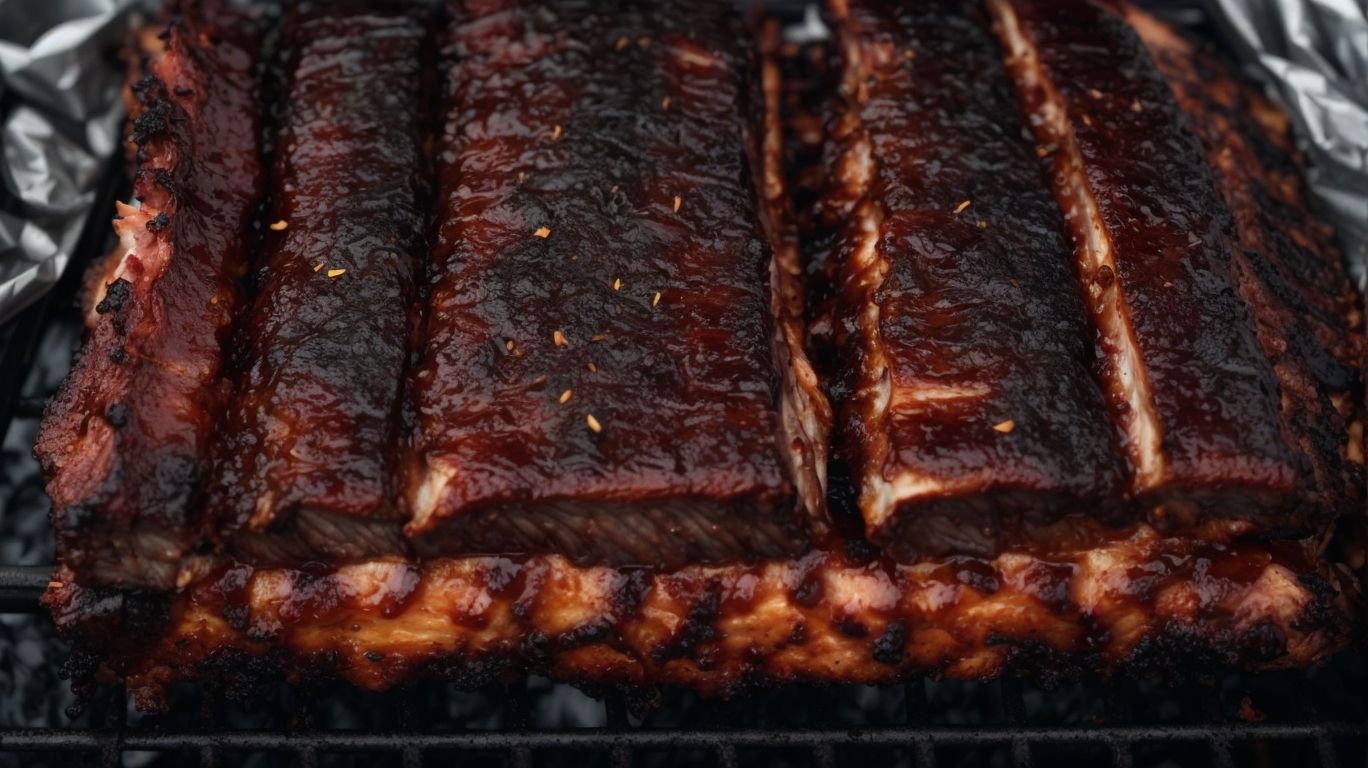
Credits: Poormet.Com – Benjamin Roberts
Determining the doneness of ribs can be done through the Bend Test, where the meat should slightly bend without breaking, or using a Temperature Test with a temperature probe to ensure the ribs reach the desired tenderness at the appropriate cooking temperature.
When conducting the Bend Test, the ribs are ready if they bend easily but do not fall apart, indicating a perfect level of tenderness. In contrast, the Temperature Test involves checking the internal temperature of the ribs; for instance, spare ribs are typically considered done when they reach around 190-203°F (88-95°C).
To ensure accurate results while using the Temperature Test, it is recommended to insert the temperature probe into the thickest part of the meat without touching the bone for a precise reading. Different types of ribs, such as baby back ribs or St. Louis-style ribs, may require slightly different cooking temperatures to achieve the ideal texture.
Bend Test
The Bend Test for ribs involves checking the meat’s flexibility to gauge its doneness, ensuring it is tender yet firm for the best eating experience based on the preparation instructions.
When conducting the Bend Test, gently lift the rib rack with tongs at one end. The ideal outcome is a slight bend without the meat falling apart or being too stiff, indicating it has been cooked perfectly.
This method is especially crucial for barbecue enthusiasts aiming to achieve that coveted balance between succulent meat and the desired level of smoky flavor. Whether smoking, grilling, or oven-baking your ribs, mastering the Bend Test can elevate your culinary skills to impress even the most discerning guests.
Temperature Test
Using a temperature probe to conduct the Temperature Test on ribs ensures that they reach the recommended internal temperature, with attention to grill temperature, air vents, and overall temperature control during the grilling process.
As you embark on this grilling journey, it’s crucial to keep a close eye on the grill temperature to achieve perfect tenderness and flavor in your ribs. By making subtle air vent adjustments, you can fine-tune the heat levels, ensuring that the ribs cook evenly while retaining their juiciness.
Temperature control plays a pivotal role in the success of your cooking endeavor. Monitoring the temperature with precision not only guarantees safety but also promotes delicious results that will leave your guests coming back for more.
Serving and Enjoying the Grilled Ribs
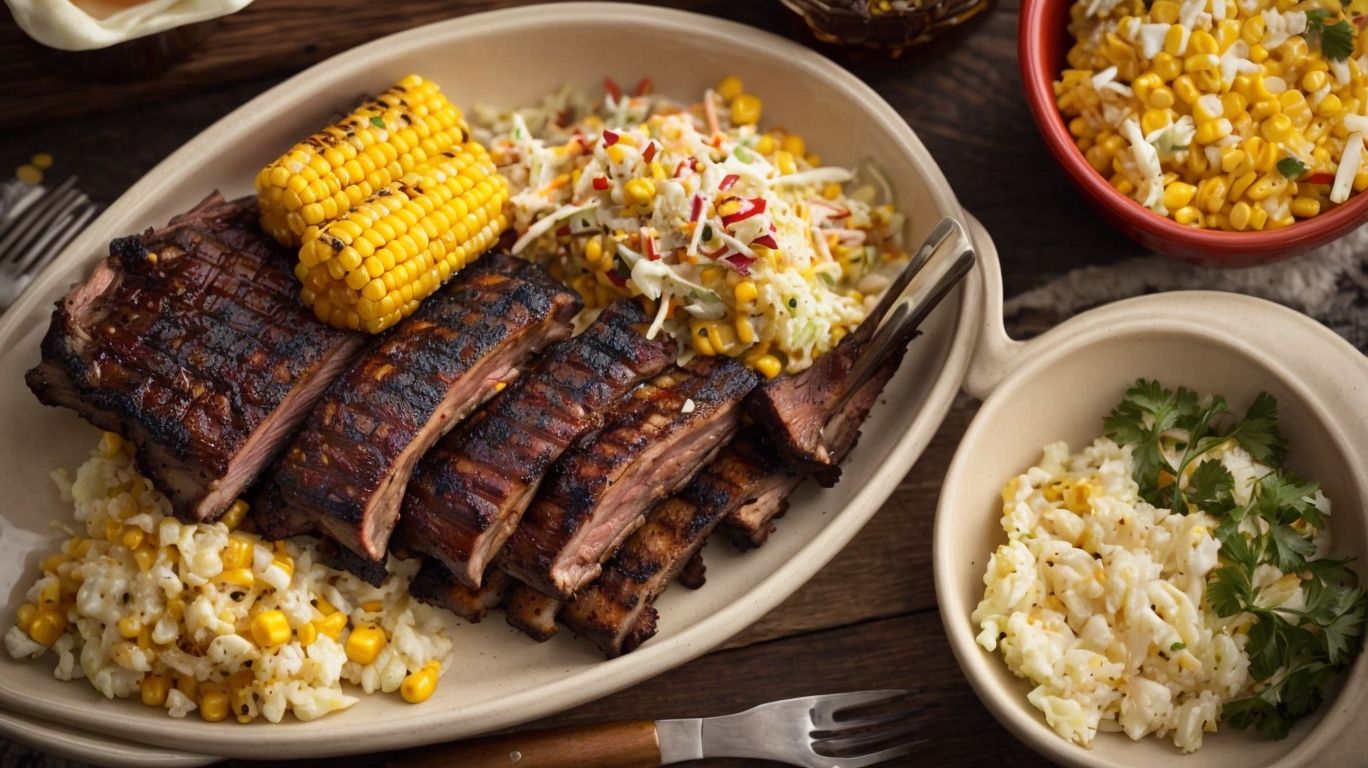
Credits: Poormet.Com – Wayne Rivera
Serving and enjoying grilled ribs involves adding a flavorful BBQ sauce, pairing them with delicious sides like coleslaw or corn on the cob, and following the recipe instructions to create a memorable dining experience.
Once the ribs are grilled to perfection, it’s time to enhance their savory flavor with a generous slathering of that tangy, smoky BBQ sauce. The sauce not only adds a delicious kick but also helps keep the meat moist. When choosing sides, opt for classics like creamy mashed potatoes, macaroni salad, or grilled veggies to complement the rich flavors of the ribs. Don’t forget to whip up a batch of homemade coleslaw or a refreshing cucumber salad for a burst of freshness.
Adding BBQ Sauce
Enhancing the grilled ribs with a touch of homemade or store-bought BBQ sauce elevates the flavors, providing a tangy and savory finish that complements the smoky notes from the grilling process.
Homemade BBQ sauce offers the flexibility to tailor the flavor profile to your liking, combining ingredients like tomato paste, vinegar, smoked paprika, and molasses in unique ways.
On the other hand, commercial sauces boast convenience and consistent quality. These sauces often feature a blend of spices, sweeteners, and acidic components for a well-balanced taste.
When applying BBQ sauce to ribs, brush it generously during the final stages of grilling or smoking to create a sticky glaze. This step not only enhances the visual appeal but also locks in moisture, infusing the meat with rich flavors.
Pairing with Sides
Pairing grilled ribs with delectable sides like grilled corn or coleslaw creates a well-rounded meal that complements the BBQ flavors, offering a satisfying and flavorful dining experience with the grilled BBQ ribs recipe.
Grilled ribs, with their smoky and juicy perfection, are a favorite among BBQ enthusiasts, and finding the perfect side dishes to enhance their flavors elevates the entire meal. The sweetness of grilled corn or the creaminess of coleslaw provides a contrasting yet harmonious combination that balances the richness of the ribs. Each bite offers a tantalizing blend of textures and tastes, creating a symphony of flavors on the palate. Whether you prefer the classic combination of ribs and coleslaw or like to experiment with different side pairings, the key is to achieve a satisfying and complete dining experience that leaves you craving for more.
Tips for Leftover Ribs
Maximize the enjoyment of leftover ribs by exploring creative grilling options throughout the grilling season, experimenting with different grilling applications and safety tips recommended by the USDA website.
When dealing with leftover ribs, their versatility shines when it comes to grilling. One innovative tip is to shred the meat and use it as a topping for grilled pizzas, adding a smoky flavor to the dish. You can incorporate chopped ribs into a grilled salad for a unique and flavorful twist. Remember to always follow safe grilling practices like preheating the grill, monitoring internal temperatures, and using separate utensils for raw and cooked meats to prevent cross-contamination. These simple adaptations can elevate your grilling experience and ensure a delicious outcome!
Frequently Asked Questions
1. How to Cook Ribs on a Grill With Charcoal?
First, prepare the grill by cleaning the grates and preheating it to medium-high heat. Then, season the ribs with your desired rub or marinade. Place the ribs on the grill and cook for about 1-1.5 hours, turning occasionally and basting with BBQ sauce. Check for doneness by using a meat thermometer, with the internal temperature reaching 145°F. Let the ribs rest for 10 minutes before serving.
2. Can I use any type of charcoal to cook ribs on a grill?
Yes, you can use any type of charcoal, whether it’s briquettes or lump charcoal. However, lump charcoal tends to burn hotter and faster, so you may need to adjust your cooking time accordingly.
3. Do I need to wrap the ribs in foil while cooking on a charcoal grill?
Wrapping the ribs in foil, also known as the “Texas crutch,” can help keep them moist and tender during the cooking process. It also helps speed up the cooking time. However, it is not necessary and some people prefer to cook their ribs without wrapping them.
4. How do I prevent the ribs from burning on a charcoal grill?
To prevent the ribs from burning, make sure to keep an eye on the temperature of the grill and adjust the vents accordingly. You can also move the ribs to a cooler part of the grill if needed. Basting with BBQ sauce can also help prevent burning, but be careful not to overdo it as the sugar in the sauce can burn easily.
5. How long does it take to cook ribs on a charcoal grill?
The cooking time for ribs on a charcoal grill can vary depending on the type of ribs, the temperature of the grill, and how many ribs you are cooking. On average, it takes about 1-1.5 hours for ribs to cook on a medium-high heat grill.
6. Can I cook ribs on a charcoal grill if I don’t have a meat thermometer?
While a meat thermometer is the most accurate way to check for doneness, you can also tell if the ribs are cooked by using the “bend test.” Pick up the ribs with tongs and if they bend easily and the meat starts to pull away from the bone, they are done. However, for food safety, it is recommended to use a meat thermometer.

